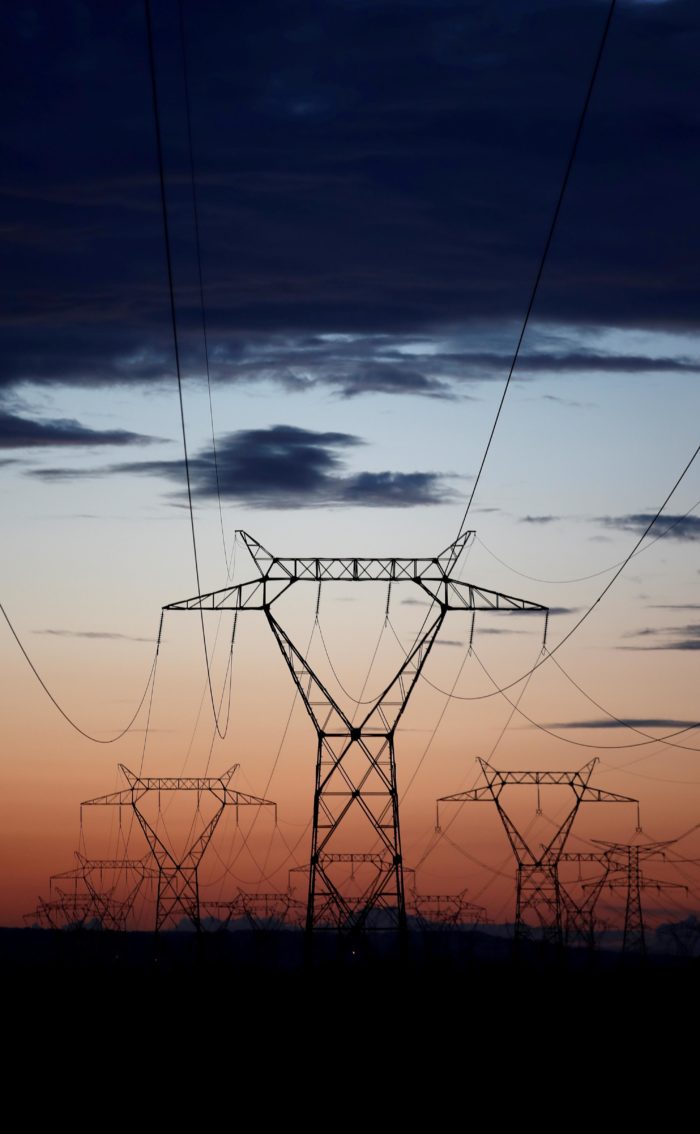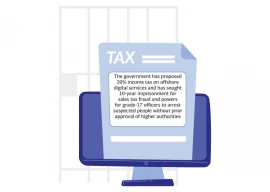
Pakistan meets two-thirds of its energy requirement from fuel oil and natural gas. In the country’s energy mix, the share of natural gas stood at 34.6% and that of fuel oil 31.2%.
That is why the country needs a lot of foreign exchange for the import of petroleum products including crude and refined oil, liquefied natural gas (LNG), liquefied petroleum gas (LPG), etc.
In seven months of the current fiscal year (Jul-Jan 2019-20), the petroleum import bill stood at $7.1 billion, or 26% of the total $27.3 billion.
The scarcity of foreign exchange is a perennial problem. It is not going to go away within a year or two. Currently, Pakistan’s economy is growing at a slow pace. GDP growth, according to government’s own estimates, tanked to 3.3% in FY19 from 5.5% in FY18.
During the current fiscal year, the growth can fall further. Lower economic growth means lesser use of energy and also lesser demand for imported fuel oil.
That partly explains why the country’s total import bill fell to $54.8 billion in FY19 from $60.8 billion in FY18 and why in seven months of FY20 it fell further to $27.3 billion from $32.4 billion in seven months of FY19.
One of the reasons why the Pakistan Tehreek-e-Insaf (PTI) government has got a deferred payment oil import facility from Saudi Arabia is that such a facility means lesser actual outflow of foreign exchange in present-day economic slump when petroleum imports are down and even in future years when the economy would likely grow faster and necessitate larger imports.
Owing to the shortage of domestically produced natural gas in FY19 and due to the fear that this shortage will aggravate in FY20, Pakistan’s reliance on crude and refined oil will increase from FY21.
Whereas the country meets the bulk of its natural gas requirement from domestic sources, in case of fuel oil it relies heavily on imports as its local output of crude oil is insignificant.
But irrespective of the rise and fall in the share of the two fossil fuels in the total energy mix, what is important to note is that Pakistan’s dependence on fossil fuels remains high.
Coal share in energy mix
Coal is another form of fossil fuel and its consumption for energy generation is growing in Pakistan. Its share in the energy mix stood at a high level of 12.7% at the end of FY18. There are little chances for a significant decrease in its share in FY19 and FY20 despite protests from those who advocate a cleaner environment.
The reason is simple. Unlike other countries that have been constantly working hard to reduce the share of coal in the energy mix, Pakistan is rather proudly went for increasing its contribution in the recent past chiefly because the country had lined up Chinese investment in this area.
It may be argued that it was a viable option because of a lack of investment in hydroelectric power plants, and the consequent decline in the hydel power share in the total energy mix.
It may also be argued that the fast depleting natural gas reserves, and the unavailability of required financial and technical resources to explore new gas reserves or accelerate gas production from the existing reserves, had compelled the country to undertake coal-fired energy projects.
These are apparently valid reasons. But an ordinary Pakistani has the right to ask a simple question: Why in heaven’s name the policymakers had not foreseen this scenario 10 years ago? And why the successive governments did not take corrective measures?
Renewable resources
It is unreasonable to justify greater use of coal in energy production just because working on other energy sources had become unfeasible financially or technically. This highlights the much-debated issue of why Pakistan has so far not been able to generate enough energy through renewable resources.
According to the Economic Survey of Pakistan 2018-19, at the end of FY18 the share of renewables in the energy mix stood painstakingly low at 1.1%. In fact, the share of nuclear energy is more than double at 2.7%.
The task before the current government is tough. It is very difficult for it to shake up the energy mix immediately. But it is expected that when the government ends its five-year term in mid-2023, the country’s energy mix will be looking better.
The world at large is aspiring to achieve faster economic growth in this century with emphasis on renewable energy. Pakistan cannot lag behind.
An energy mix increasingly tilted towards renewable resources is important also from the geostrategic and security point of view.
Former US ambassador to Pakistan Cameron Munter warned on March 3, while speaking at a seminar in Islamabad, that Pakistan and India were likely to fight a war in future over their share in water resources.
Indian media reports suggest that Delhi is considering stopping the flow of water from a tributary of Ravi River that flows through the Indian-occupied Kashmir. It is planning to do so by constructing three dams to stop its unused share of river water from flowing into Pakistan.
Such developments, combined with Pakistan’s scant water storage and rain-harvesting capacity, pose a real threat that can be tackled by reducing dependence on hydroelectric power in the short run and by building new dams in the long run.
The use of coal in energy production will have to be reduced anyway to ensure better health for the population and to conform to international conventions on the protection of environment. The country really needs to accelerate efforts to produce more solar and wind energy.
The writer is a mechanical engineer and is doing masters
Published in The Express Tribune, March 23rd, 2020.
Like Business on Facebook, follow @TribuneBiz on Twitter to stay informed and join in the conversation.

1737542501-0/BeFunky-collage-(19)1737542501-0-405x300.webp)


1737537702-0/fizza-(79)1737537702-0-165x106.webp)









1737452260-0/Gaddafi-stadium-(2)1737452260-0-270x192.webp)









COMMENTS
Comments are moderated and generally will be posted if they are on-topic and not abusive.
For more information, please see our Comments FAQ